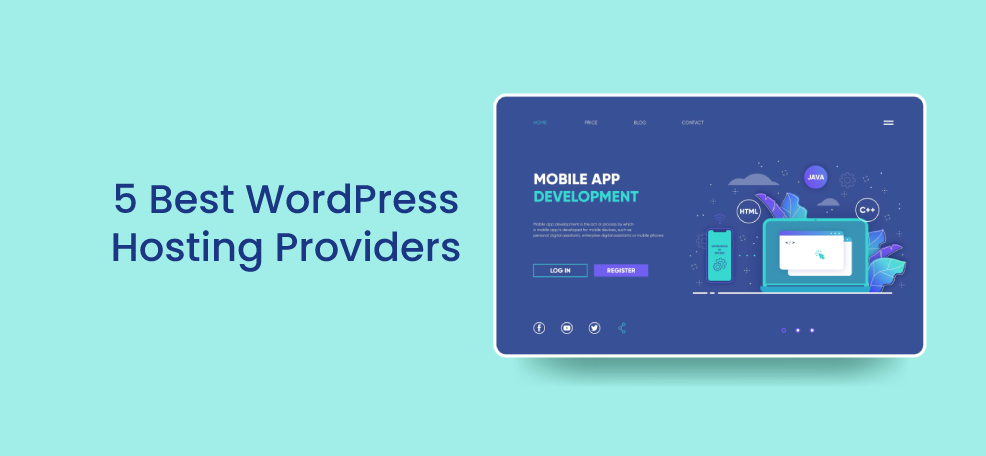Businesses’ strategies for locating target audiences are vastly different today than they were just a few decades ago. It has been challenging to transition from traditional methods to effective digital-world strategies.
In today’s digital age, content marketing is something that you can do on YouTube, Instagram, Facebook, and many other social platforms, directly from your business phone. It is most effective when you want to generate leads and retain customers who have already made a purchase.
Content marketing lets you establish a presence in your customers’ daily lives through social media. Furthermore, content marketing not only helps you attract customers who are interested in your brand propositions but also helps you communicate your company’s identity and values.
If you want to keep up with the modern content marketing landscape, read on for actionable tips!
1. Combine Creativity With Research
The best content marketers are both researchers and visionaries. The visionary element inspires you to find new ways to engage your audience and anticipate their needs. But it’s the research that gives impetus to creativity. The best kind of research is the one that comes fresh from your audience.
Feedback forms, customer interviews, and polls provide insights into understanding customers’ behavior patterns and wants.
Directly communicating with your audience is also highly effective for proving content marketing hypotheses. Talk to people in different age groups, regions, and backgrounds.
Deep dive into the common points that attract them to your brand and their differences. Note the language people use to describe your business. Then ignite your creativity with this data.
2. Recognize the Buying Cycles of Your Customers
A good content marketer recognizes the importance of engaging and impressing readers at all customer life cycle stages. While your website content should immediately appeal to new visitors, it should entice hesitant prospects to purchase and enable customer engagement and long-term customer retention.
Video campaigns are gaining popularity, and you can use them to assist your sales team. According to the data posted by Ahrefs, essential marketing these days is done with video marketing techniques rather than infographics.
3. Update Your Audience Archetype Regularly
Sometimes you feel that something in your engagement is off, but you can’t pinpoint why. It may be that your audience archetype has shifted.
Many brands make mistakes in creating an audience archetype and buyer persona and then forgetting to keep it up-to-date. The world is swiftly changing, and you may be surprised at the shifts your audience undergoes in just two years.
Your audience archetype visualizes your customer, their character traits, emotional makeup, and psychology. We aren’t just talking about an “ideal audience” but your actual audience, the one that engages with your brand today.
Base audience archetypes and buyer personas on business analytics. Regular feedback from your audience will show subtle changes that the audience archetype is going through and help you pivot to keep content efforts relevant.
4. Use Guest Posting to Develop Authority Links
Guest posting is a great way to raise brand awareness. You will be able to promote your brand by utilizing the host blog’s entire network, giving you access to a new audience.
You should see a good return on investment if the blogger has a large and devoted fan base. This is a straightforward and low-cost way to get a lot of pre-qualified visitors to your website.
5. Make Social Sharing Easy on Your Blog

This is one of the most straightforward tips to put into action. Include visually appealing (and prominently placed) social sharing buttons throughout your website pages and blog posts.
Use a simple, one-click sharing button; no one will use it if it’s time-consuming or otherwise challenging.
6. Personalize Your Website With Content Mapping
One of the best parts of modern content marketing is personalization. We often hear about it but get confused in thinking social media is all there is to it.
You should consider website content mapping if you have a website and sell any product or service on it. This process puts you in charge of the kind of content visitors see on your website based on their buyer persona, previous interactions, page views, how they find your website, etc.
Website content mapping creates fluid, personalized content. You make several buyer journeys with different posts, offers, texts, and/or visuals based on several buyer personas. This maximizes the sales output of your website and makes customers feel as if you’re talking directly in their ears.
7. Refresh Old Content

Optimizing older posts only take a year or two for your content to become obsolete in this rapidly changing industry. Or, it could be ranking for keywords you didn’t intend to target in the first place.
Rather than going through the trouble of writing an entirely new post, it is preferable to update it simply. You won’t lose any SEO juice on the original URL this way.
8. Make Both Evergreen and Seasonal Content
Both evergreen and trending content is famous for a reason, but I prefer to focus 70% of my efforts on evergreen topics and 30% on trending topics.
Make no mistake: if a case is trending in your industry, write about it. Ensure you’re not producing the same content as everyone else; offer your firm’s unique perspective, statistics, and research.
9. Bond Through Language
Good content is never difficult to grasp. Most people are not interested in reading a textbook, but they are interested in conversing with a friend. Instead of a monotone, write in a conversational tone.
This is also an excellent opportunity to develop a distinct voice for your brand. If you’re a funky startup, you can “chat” with your readers and use casual jargon. You’ll want to sound professional if you work for an accounting firm, but you can make the subject more compelling using clear examples and simple language.
10. Spend Money on Visual Content

Creating a short video depicting your content has been proven to be beneficial. Try to upload one video content per week to grab the maximum audience.
People get more attracted to visuals as compared to static content. With visual content, getting backlinks is no more a challenging task.
Apart from that, you can get social shares as well. You can use infographics if you are not experienced in creating video content. This can support your content marketing efforts to a great extent.
11. Prioritize the User Experience
Indeed, your content is adequate; you use the appropriate keywords, topics, and tone. But what about the user’s point of view? Do you ever consider whether your website’s visitors like it or not? If users have a good time exploring what they want without obstacles, they will most likely return to your website.
However, you may lose your loyal audience if you are not concerned with the user experience. Consider a mobile-friendly site to improve the user experience on your online site. All websites should have simple navigation and content that is easily accessible. As an addition, you can provide a live chat app that allows your audience reach out to you if they have further questions.
12. Make Use of a Variety of Distribution Strategies
Consider partnering with organizations that specialize in outreach opportunities. Because social media is so convenient to use, it is the most common way to commercialize a website. But, you must focus on incorporating a range of distribution methods.
The best content marketing tips are link-building with high-quality websites, guest blog posting, video marketing, and collaborating with influencers. Industry influencers will provide you with significant exposure to their readers if they choose to visit your site. Thus, building relationships with influencers is one of the most crucial things you can do when advertising your website.
13. Review Your Analytical Reports
Keeping an eye on your analytic reports is one of the most beneficial content marketing strategies. You must keep an eye on them and assess what works. Because readers’ opinions change, so should the way you write and market your content.
Keep track of traffic sources for keywords and phrases, connections, and other links. Use notices to keep track of information relevant to the customer’s needs. You must determine what attracts them to your homepage or competitors’ websites.
14. Create Campaign Objectives
To create the most effective campaigns to reach your target audience, you must first collect a wealth of information about them.
When creating campaigns for your website, you must identify appropriate goals. Some people mistake focusing solely on price and keywords rather than long-tail keywords.
When using keyword research tools, stay updated on keywords that are more often used in searches.
15. Examine Your Competitors

When you are a digital marketer, you have to be keenly observant. You must analyze what your competitors are posting. This way, you can try similar things that work well for your competitors.
At the same time, by analyzing their activity, you can spot the areas your competitors miss. This is a chance for you to stand out and provide valuable content that will meet the users’ needs and eventually rank high in Google’s SERP.
16. Use Other Marketing Techniques
Social media marketing is expansive, and various marketing methods can share your content with a diverse audience. If you use PPC, you can advertise content through ads. Aside from that, sharing content on social media handles can help you grow your audience.
Final Thoughts
People are creating content and getting hits on their channels daily, so content marketing is becoming the core of marketing. While creating content, consider its value to your reader.
Duplicate content is never appreciated, so even if trying to outpace competitors, make sure to remain unique and genuine.
Implement the tips listed above, and you’ll start seeing great results!









